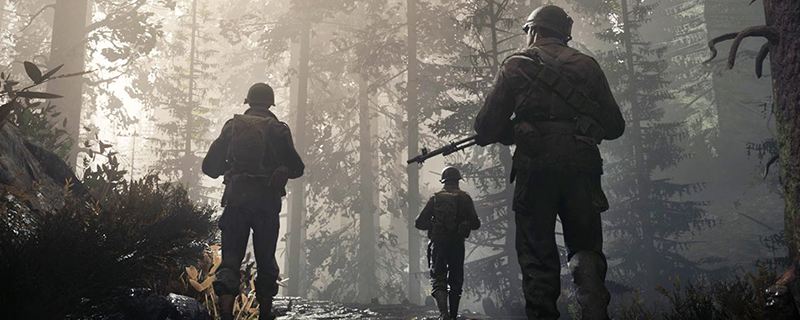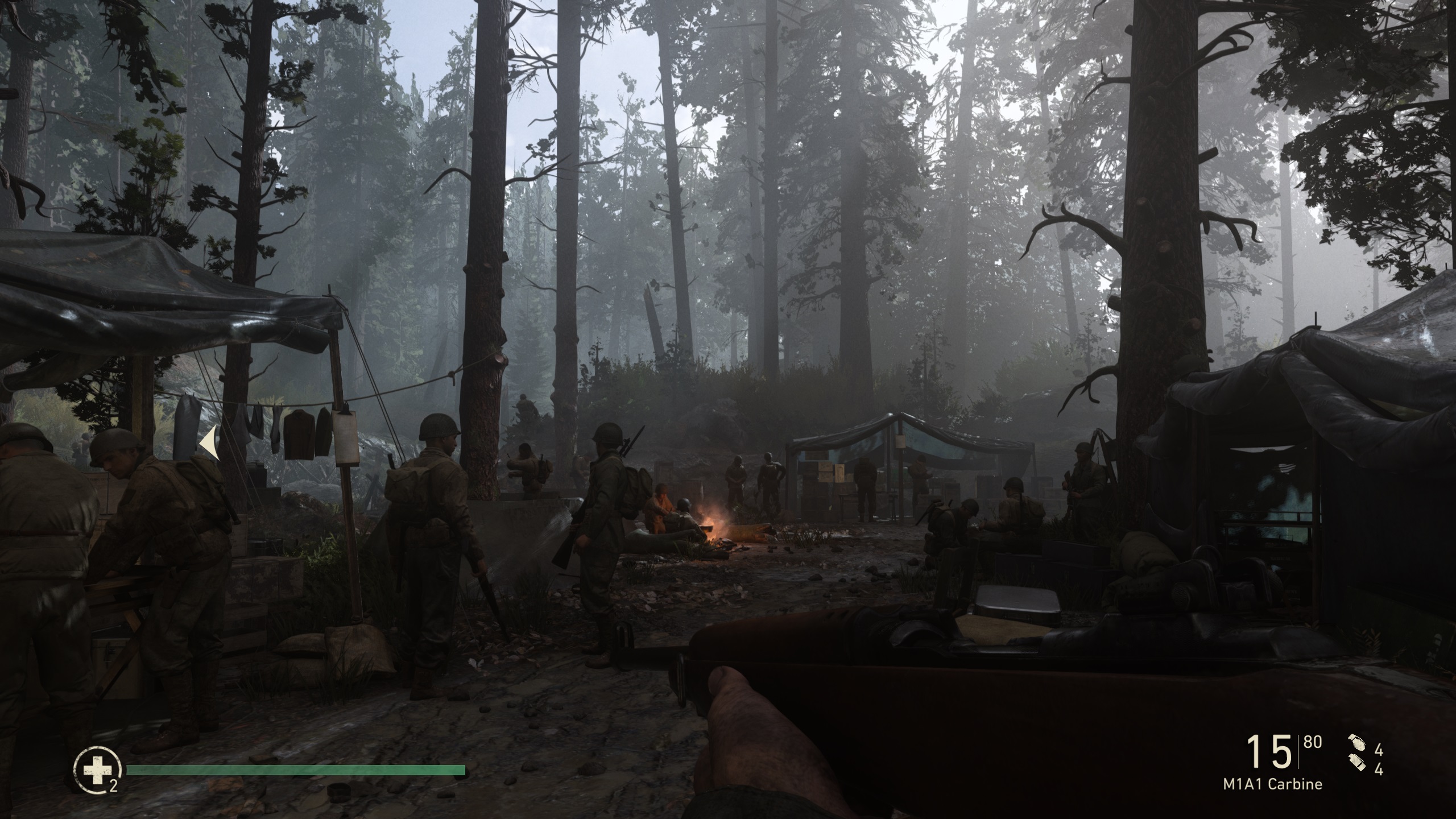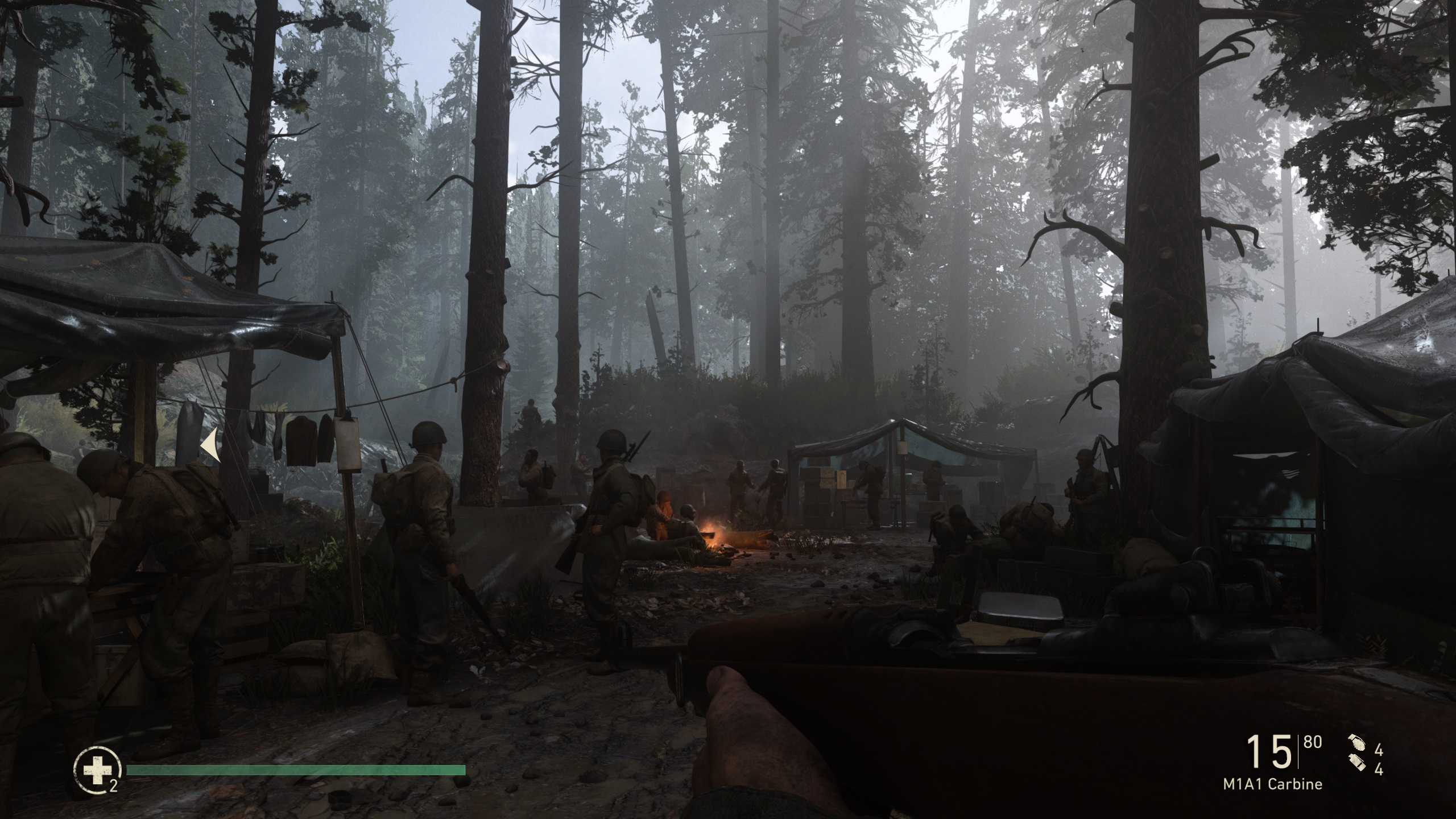Call of Duty: WWII PC Performance Review
High-Resolution Screenshot/graphical comparison – Low to Max settings
Call of Duty: WWII is a game that is designed to scale well while doing very little to remove objects from the game, which means that object draw distances and similar factors have a minimal change when moving from the game’s lowest to its maximum settings.Â
What changes is how the scene is rendered, be it changes to post-process effects like anti-aliasing or simply dressing the environment in high resolutions texture, shadows or reflection effects.Â
At the game’s lowest settings the game simply looks awful, placing low-resolution textures on what is otherwise fairly complex geometry, which in the case of character faces can make the campaign feel more like a puppet show or a horror movie. Â
In the below shots we can see exactly how little a lot of the game’s geometric detail changes, with even minor details like tree branches retaining their complexity when moving through all of the game’s graphical presets. Â
At our “medium/normal” settings we see the game offer a much more pleasing presentation, with improvements to texture detail, anti-aliasing and shadow quality making the scene much more believable and allows faces to appear a lot more human.Â
Moving to High and Max settings we can see texture details continue to improve, going a long way towards making the game feel more grounded, though certain low-resolution texture can ruin this when viewed up close, such as the texture detail on Sherman tanks and other vehicles.Â







